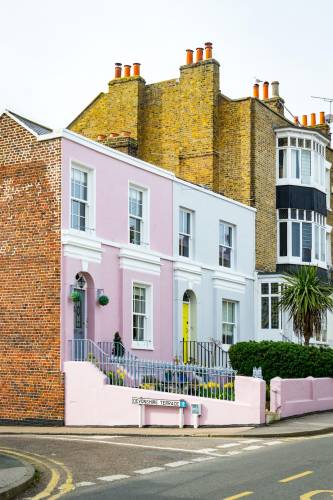Prime London Property – February 2021
At the beginning of 2020 the prime London market looked set to recover, with a 0.9% price rise in Q1, after a period of uncertainty for the UK. Now, while the landscape of the prime London market is far different than was forecast, there is more positive news for the upper end of the housing market.
We speak to Ed Tryon, Director at Lichfields, a prime central London property search firm, for his thoughts on the start of the year for the prime London market. Plus, Ed shares his opinion on how buyers might react to emerging trends.
Positive overall forecasts
In Q3, there was a 17% rise in £5 million+ transactions in central London and, post-lockdown, exchanges were at their third highest in the last 5 years. This is promising for the coming year, and despite rapidly changing circumstances, forecasters remain positive. Dexters, Chestertons and Knight Frank are all predicting a 2-3% rise in values in prime London, although this is a slightly more conservative outlook than at the end of Q4. Dexters also predicted in early January that their prime London lettings and sales would double in number over 2021, a bounce-back boosted by the vaccine rollout.
Ed agrees that the outlook for the prime central market is positive, with plenty of activity still to be seen.
“Given where we were in March last year compared to where I expect we’ll be in March this year, the outlook is optimistic. Just as an example, I’ve undertaken one particular search in the second half of 2020, for a family house in Chelsea up to 20 million – 8 of the options we looked at sold and while that's not really hitting the national press, that was in the middle of lockdown, even when people weren't able to come to the UK.”
But with the different regions of prime London having their own appeal, how will each area be affected by evolving trends?
Overseas Buyers
One significant factor is the renewed lockdown – and the introduction of international travel restrictions and ‘test-to-release' quarantine. While we might have seen a significant increase in overseas buyers as the 2% stamp duty surcharge deadline draws near, some may be put off by the restrictions and new variants found in the UK. This is good news for domestic buyers, as areas typically popular with overseas buyers, such as Knightsbridge and Mayfair, will be less competitive.
“With a lack of foreign buyers able to come to the UK, and general trade related uncertainty – some micro markets will remain subdued.” Ed tells us. “Best-in-class assets – particularly family homes – will outperform the underlying market.”
“There is an additional 2% stamp duty for non-UK residents coming in on 31st of March as well, which combined with travel restrictions, I think will act as a significant headwind. 2% is not a huge additional amount if you're an UHNW individual, but it contributes to the constant drip of additional taxes. It wasn’t that long ago that stamp duty was at 7% – it will now be 17% for people who are non-UK residents and already own another home.”
Prime Outer London
The appeal of larger homes with outdoor space has also not diminished over the course of last year, and Knight Frank predicts a 4% increase in value for POL property over 2021.
“My view is very much that anybody who is an UHNW individual is going to be putting a significantly higher value and premium on their environment. It used to be just a place to sleep and spend a bit of time on the weekends for a lot of people, now it is a home office; it's a sanctuary; it's a school; it's the cinema; it's the gym – it’s everything we used to go out and do. Undoubtedly there is going to be more of a value put on people’s primary residences.”
“The counterpoint to that will be, for example the micro flats bought as an investment, in secondary locations – owners will need to take very significant discounts at the moment if they’re to sell or let properties.”
This was also suggested by data from Coutts in Q3 of 2020, where we can see which specific areas are holding appeal for buyers. These include Hammersmith & Chiswick, Wimbledon, Richmond, Putney & Barnes and St. John’s Wood, Regent’s Park & Primrose Hill – all of which bucked the trend of falling London prices with increases in value of up to 5.5%.
Ed agrees that prime outer London is bound to perform well, but says the prime country market is not to be outdone.
“If you look at population density of the country, like Hampshire for example, and the number of people trying to sell a house in places like Fulham, Wandsworth, Battersea or Hammersmith for 1 to 2 million, who then want to move to Hampshire, or Wiltshire or Berkshire – there is almost no supply. I think we will see significant upward pressure on prices, just because with each house that comes to the market, there's 20 people chasing it. When people buy one of these, it's out of the market 25, 30, 35 years – so I think those are going to be the areas which will most benefit from price inflation this year.”
What this means for you
- If you have the confidence to buy, optimistic offers may be more possible in prime central markets.
- Competition in prime outer London continues to be strong.
- The prime central market is predicted to have a strong recovery in the mid-term.
- Prime country residences are still some of the most difficult to come by, in part due to the changing habits of buyers.










